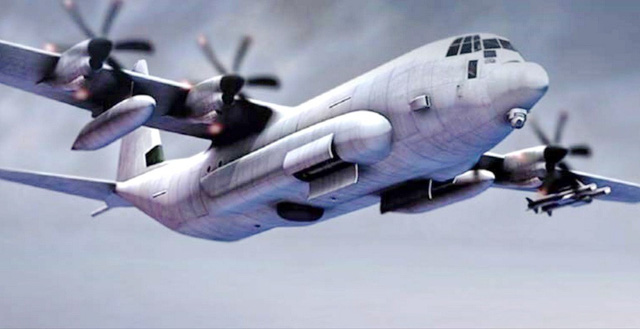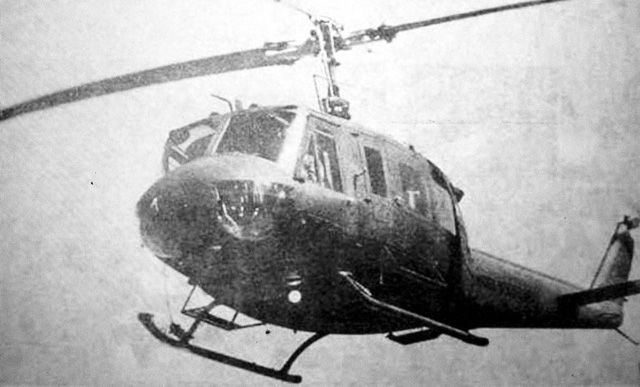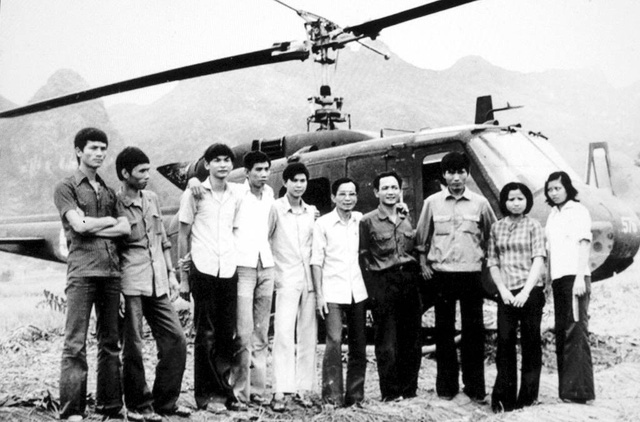Plane hijackings in post-1975 Vietnam were not limited to civilian flights.
>> Skyjacking in Vietnam: P4 – Downing four hijackers
>> Skyjacking in Vietnam: P3 – Tracking down perpetrators of 1978 DC4 hijack
>> Skyjacking in Vietnam: P2 – 52-minute life-and-death ordeal
>> Skyjacking in Vietnam: P1 – First hijackers
The skyjacking of several military planes caused quite a stir at air bases in northern and southern Vietnam.
Stealing a C-47
A C-47 plane belonging to Regiment 918 was the target of the first skyjacking of a military plane in post-1975 Vietnam on March 22, 1978.
The C-47 Skytrain was a propeller-driven aircraft manufactured by now defunct U.S. company Douglas for civilian and military transport.
Lieutenant Colonel Lai Dac Ngoc, head of the former Saigon Regime’s air force training department, had been recruited as a C-47 instructor under the newly unified government, according to Senior lieutenant-colonel Nguyen Chi Cu, now 79, former deputy head of Regiment 918 (now Brigade 918).
Unfortunately, no one would have guessed he’d wind up perpetrating the newly unified country’s first military aircraft skyjacking alongside co-conspirator Senior Lieutenant Dinh Cong Gieng, a pilot from Regiment 918.
Of the 10 pilots and flight engineers serving in Regiment 918, Ngoc was the only one with prior experience flying a C-47. Gieng, on the other hand, had piloted the Soviet mass-produced single-engine biplane An-2 before learning to fly a C-47.
On the morning of March 22, 1978, the C-47 aircraft took off from Tan Son Nhat Air Base en route to Quan Long Airport in the southernmost province of Ca Mau for a scheduled flight drill.
The plane was fully loaded with fuel and other supplies needed for the exercise.
Upon arrival at Quan Long Airport, the aircraft’s first and second flight engineers went food shopping, leaving Sr. LT. Gieng and Lt. Col. Ngoc alone on the plane. The duo took advantage of the situation and requested permission from the management of Ca Mau airdrome to conduct another flight in order to test a broken engine.
According to Sr. Lt. Col Cu, planes were typically required to have a flight engineer aboard, however, as there was no suspicion of a hijack, “the management of Ca Mau airport gave their consent. To everyone’s astonishment, the duo vanished with the aircraft,” he recounted.
The officer shared that he was on duty as a flight commander at Tan Son Nhat Air Base when he was notified of the incident.
“I was stunned at the thought that they had seized the plane to fly overseas. It took only three minutes to leave the mainland from Ca Mau,” he added.
The C-47 plane flew to Thailand before landing in Singapore.
The incident left a devastating impact on the moral of Vietnam’s pilots, particularly those in Regiment 918.
C-130 seizure
Over one year later, on the morning of November 24, 1979, the country’s air force was once again dazed when a C-130 Hercules aircraft was stolen by seasoned pilot Tieu Khanh Nha at Tan Son Nhat Air Base.
Nha was the leader of the C-130 squadron.
The Lockheed C-130 Hercules is a four-engine turboprop military transport aircraft.
According to contemporary pilots, Nha was a courageous pilot with exceptional skills. His courageous bombardments of Pol Pot’s Khmer Rouge Regime in Cambodia in the 1970’s had earned him much notoriety amongst his colleagues.
Nha’s bravery had become so well-known that his dossier had even been filed for the title of national hero.
 |
| A C130 similar to the plane stolen by Tieu Khanh Nha. |
When a border war between Vietnam and China broke out in February 1979, a stir was caused within Saigon’s Chinese community as rumors began to circulate that the Vietnamese government would begin discriminating against those of Chinese descent. Allegedly, the recommendation that Nha receive the national hero honor was ignored for that reason.
Nha was also given a lifetime flight ban.
“The ban came as a crushing blow to Nha. He was desperate and had no choice but to leave the country,” T.M.Q., one of Nha’s former colleagues, said.
The C130 which Nha would run off with was undergoing repairs on the runway.
An imposing C-119, an American military transport aircraft, was stopped on a road for internal use, inadvertently blocking the C130’s path that day.
In the wee hours of the morning, Nha was able to sneak his wife and son into the hangar through a hole in a fence that had been secretly cut the previous night. He told his family to wait for him in an abandoned shed near where the C-130 was parked.
At 7:30 a.m., upon hearing the revving sound as a flight engineer and another officer started the engine, Nha sneaked his wife and children aboard.
He held the flight engineer at gun point, intimidating him into getting off the plane.
“We had no idea how Nha managed to maneuver the C130 clear of the bulky C119,” Q. pondered.
The entire ordeal last only a few minutes. Before anyone realized, the C130 was in the air headed towards Vung Tau, approximately 120km from Ho Chi Minh City and then Singapore – the closest way to escape Vietnam.
As an outstanding pilot, Nha knew which altitude to reach in order to avoid detection by the air defense radar network and F5 supersonic fighter aircraft from Bien Hoa Airport.
Upon landing in Singapore, Nha and 11 others sought permission to settle in the U.S.
Chopper robbery
On September 30, 1981, the brazen hijack of UH1 helicopter number 576 at Bach Mai Airport in Hanoi was another blow to the military.
The conspirator was Second Lieutenant Kieu Thanh Luc, a pilot in Regiment 917 who had previously received a flight ban for various violations.
“Resentful and outraged, Luc devised a sophisticated scheme to hijack a chopper and seek asylum abroad,” said Colonel Tran Van Tuyen, former lecturer at the Air Defense-Air Force Academy and former air head of Regiment 918.
 |
| The UH1 plane hijacked by Kieu Thanh Luc is seen in this file photo. |
Also on board were warrant officer and flight engineer Hoang Xuan Doan; Le Ngoc Son, a warrant officer and flight engineer under the former Saigon regime; aviation engineer Duong Van Loi, and 10 others.
In the early morning on September 30, Luc and his accomplices knocked midair guards unconscious to seize the chopper.
After lifting off from Bach Mai Airport, Luc picked up his lover and her friend who were awaiting his arrival at Long Bien Stadium.
The hijackers had originally planned to fly to Hong Kong but were forced to land in a paddy in Daxin Xian District, Guangxi Province, China when the helicopter began to run out of petrol.
The brazen robbery of an armed-to-the-teeth military helicopter loaded with fuel in broad daylight at the commanding headquarters of the Air and Air Defense Force caused bewilderment and left a serious nationwide impact on the country’s armed forces.
Shortly after, an emergency alert was issued and a Mig supersonic jet fighter set off in pursuit of the chopper but was too late.
“The two pilots on duty that day were handed jail terms. It was a tremendous shock to all of us, not just Regiment 917,” Col. Tuyen noted.
Like us on Facebook or follow us on Twitter to get the latest news about Vietnam!



















































